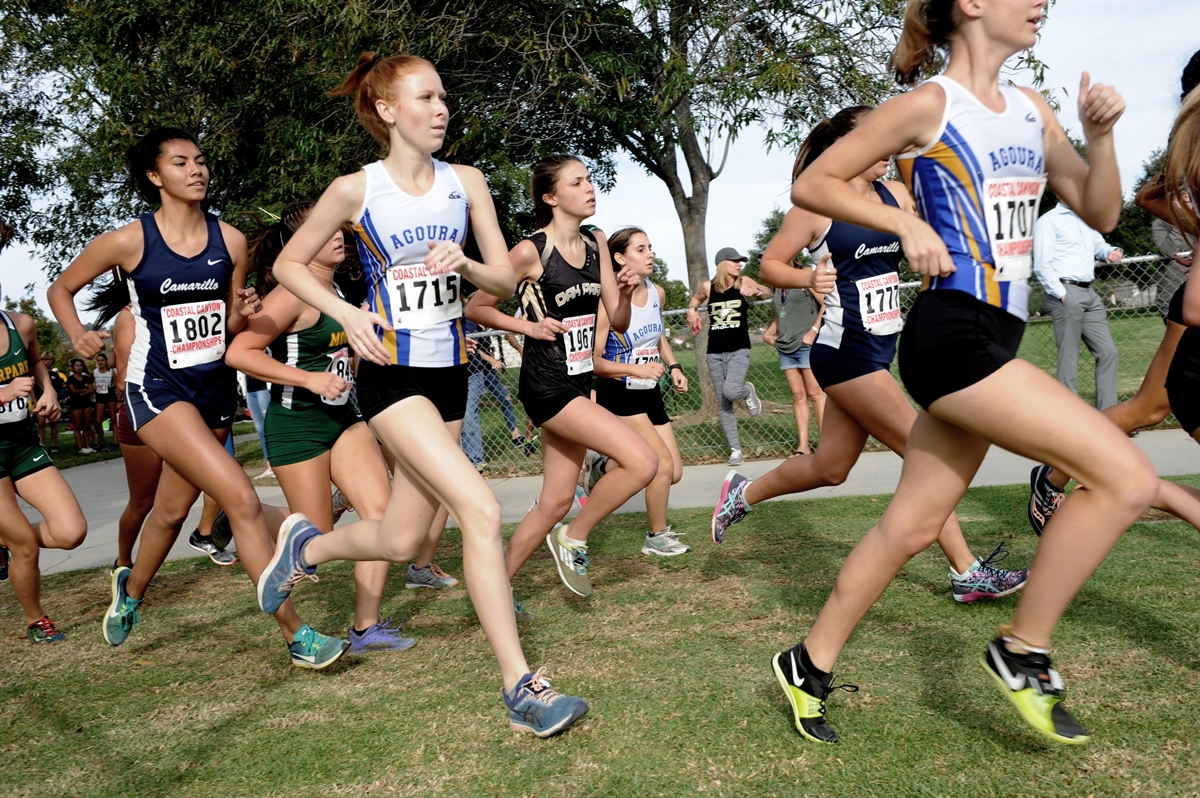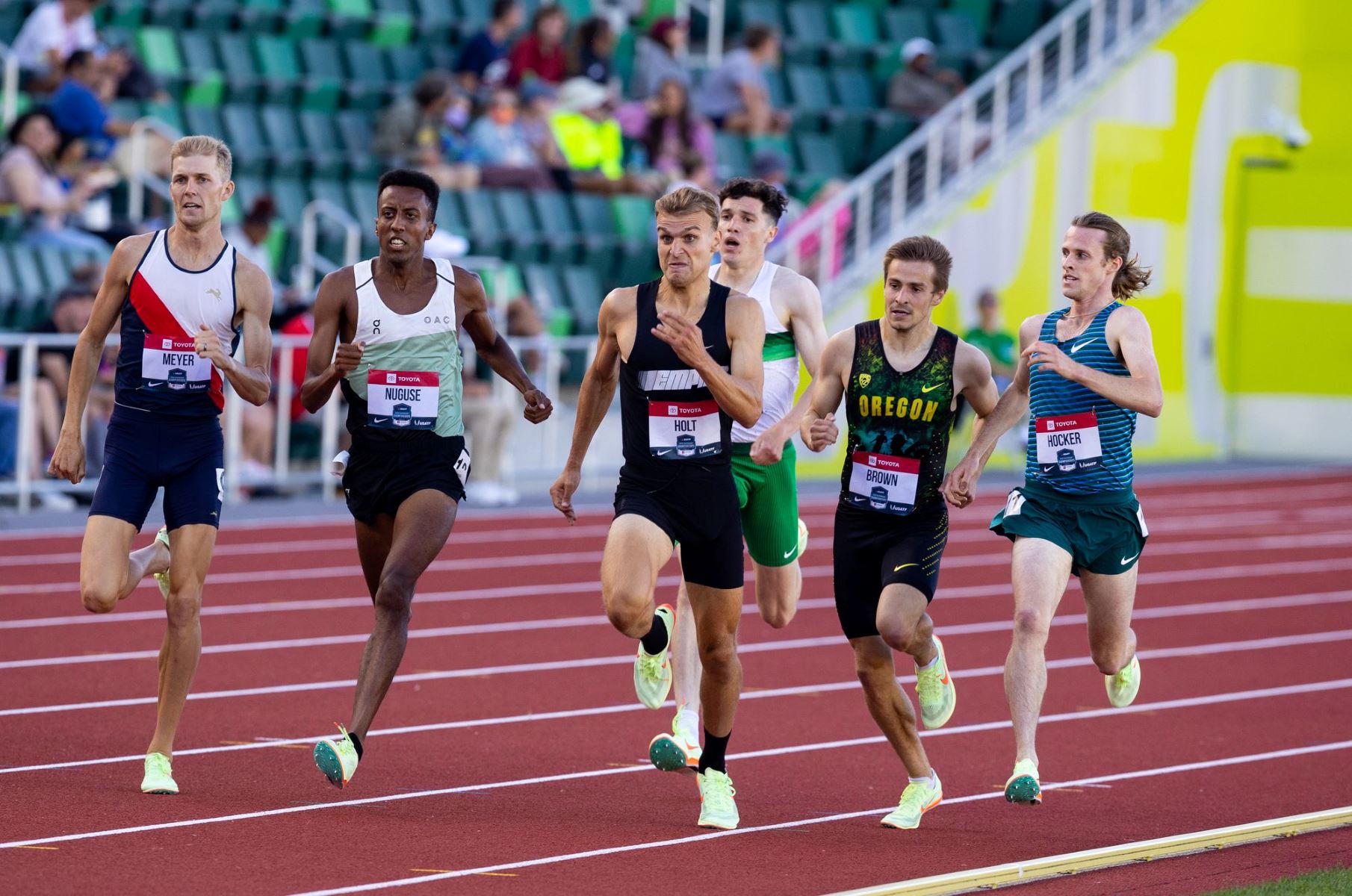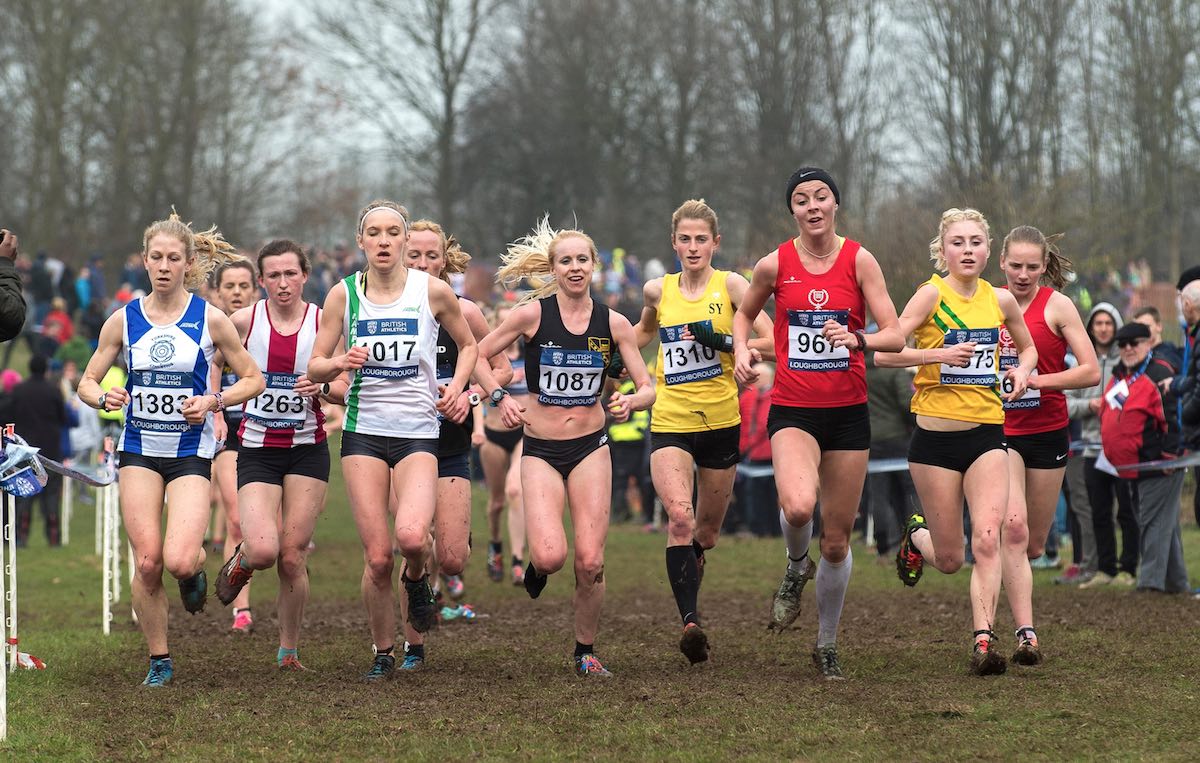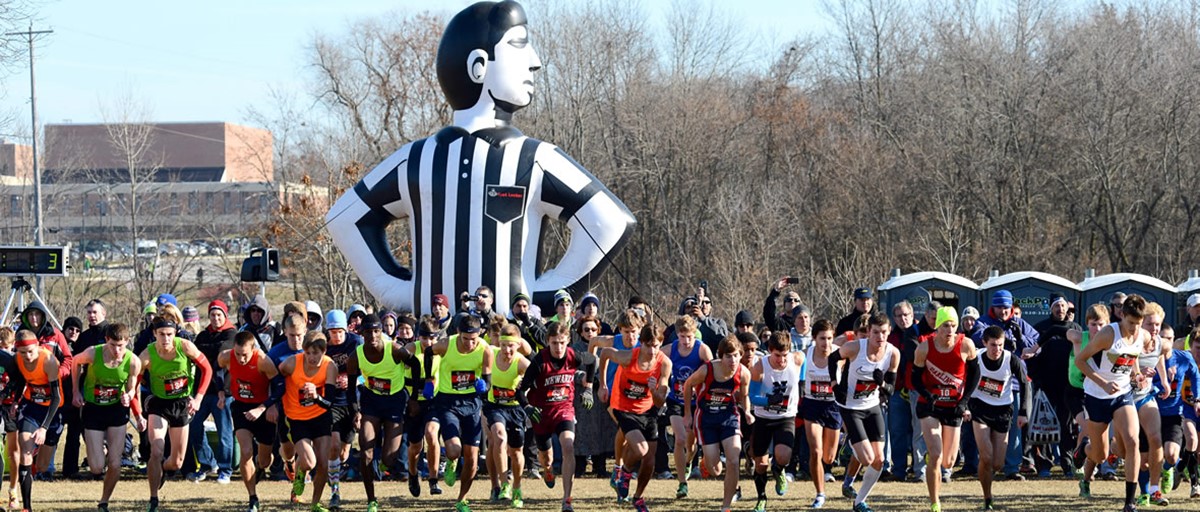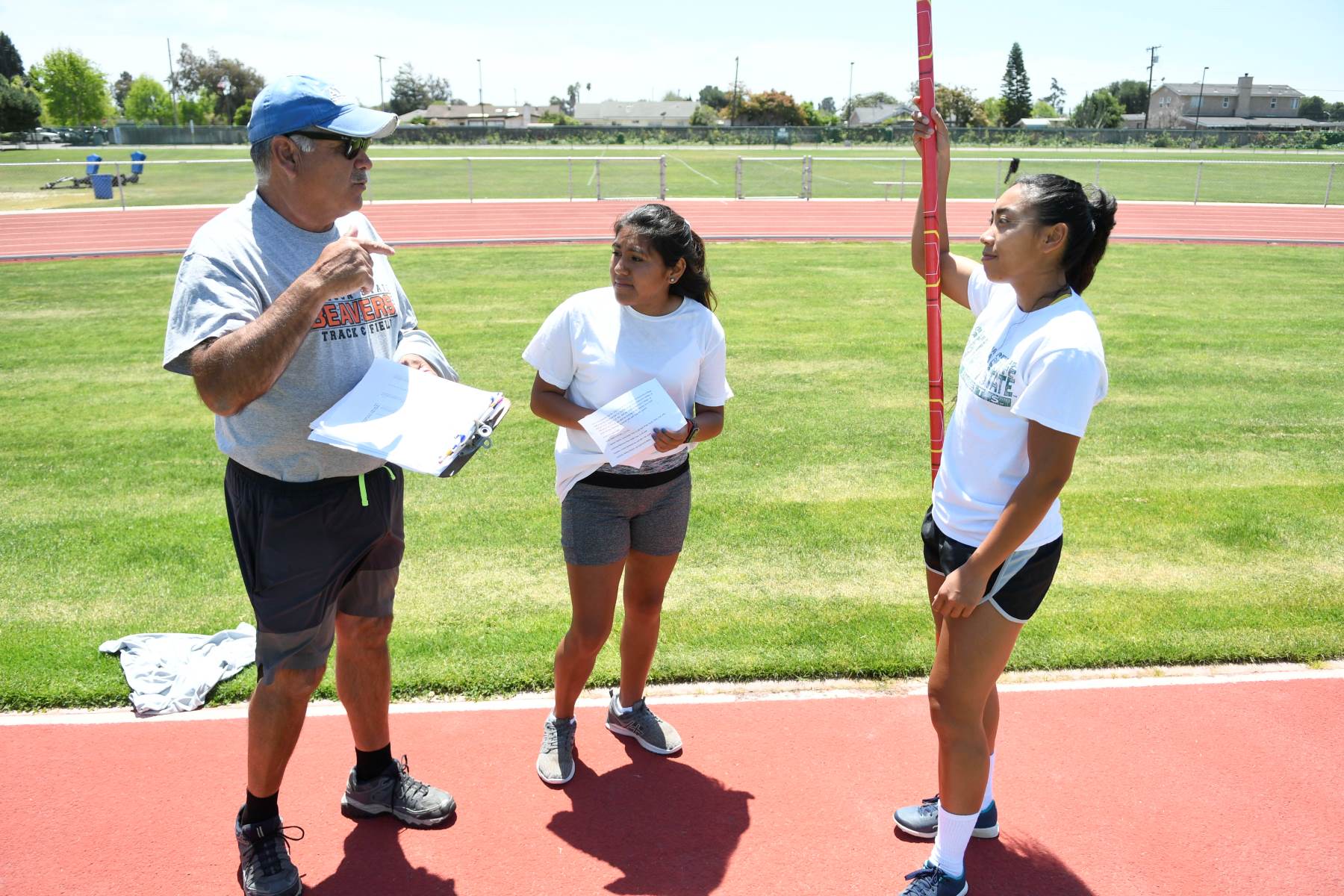Home>Misc>Featured>How To Qualify For Division III Cross Country Regionals
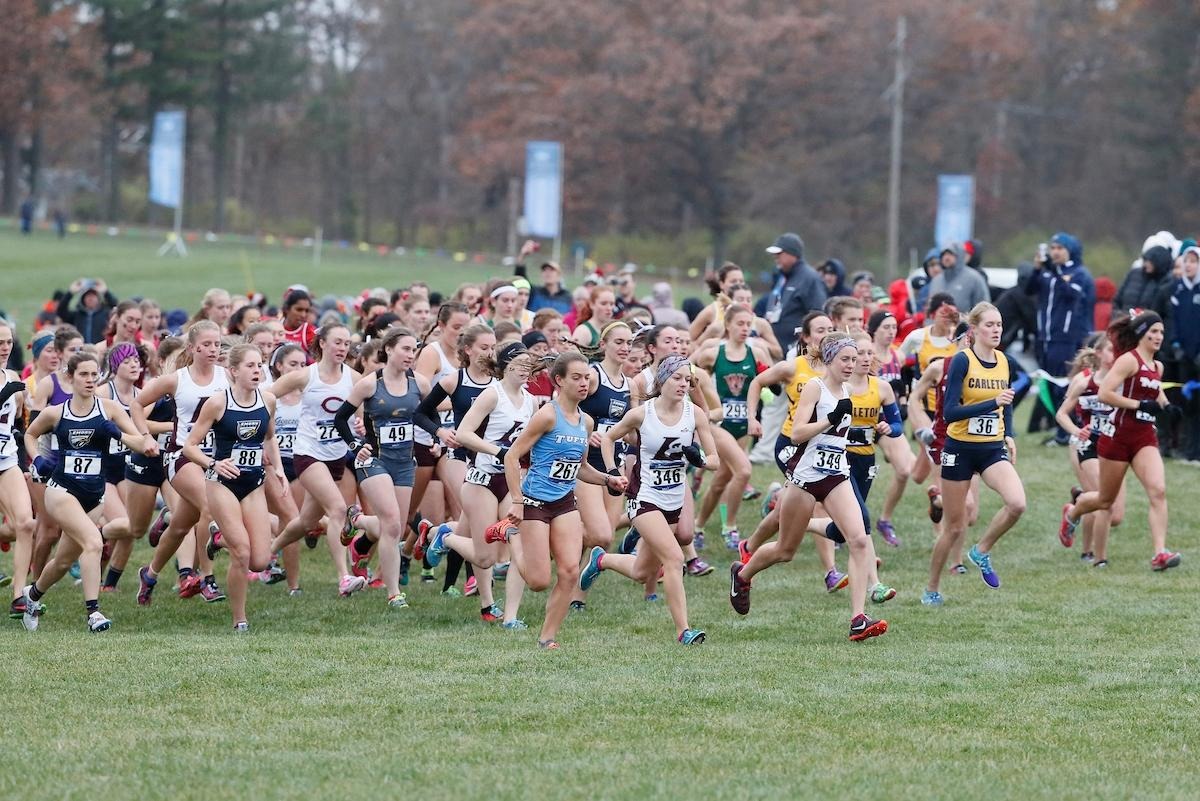

Featured
How To Qualify For Division III Cross Country Regionals
Modified: October 3, 2023
Learn how to qualify for Division III Cross Country Regionals with our featured guide. Boost your chances of making it to the regionals and achieve your running goals.
Introduction
Welcome to the exciting world of Division III Cross Country Regionals! If you’re an avid runner with dreams of competing at the collegiate level, qualifying for Division III Cross Country Regionals can be a major milestone in your athletic career. This highly anticipated event brings together some of the best cross country runners from colleges across the region, creating a thrilling atmosphere filled with fierce competition and camaraderie.
In this article, we will provide you with valuable insights into what it takes to qualify for Division III Cross Country Regionals. From understanding the eligibility requirements to meeting the time standards, we’ll guide you through the necessary steps to make it to this prestigious event.
Competing in Division III Cross Country Regionals not only showcases your athletic abilities but also offers an incredible opportunity to connect with fellow runners who share your passion. It’s a chance to prove your dedication, perseverance, and skill on a stage that celebrates the sport of cross country running.
In the following sections, we will delve into the specifics of the qualifying process, including the academic requirements, time standards, and the necessary preparations to excel at the competition. Whether you’re a seasoned athlete or just starting your journey in cross country running, this guide will provide you with the essential information you need to navigate your way to Division III Cross Country Regionals.
So, lace up your running shoes, get ready to hit the trails, and let’s explore the path to qualifying for Division III Cross Country Regionals!
Understanding the Division III Cross Country Regionals
The Division III Cross Country Regionals is an annual event that brings together collegiate cross country teams from various colleges and universities within a designated region. These regionals serve as a stepping stone towards the ultimate goal of competing at the NCAA Division III Cross Country Championships.
Each region typically consists of a predetermined number of colleges or universities that compete against each other in cross country races. The number and composition of regions may vary geographically, but the goal remains the same: to identify the top teams and individual runners who will advance to the national championships.
The regional meets are held at specific course locations, chosen by the NCAA and the participating institutions. These courses are meticulously designed to provide a challenging yet fair terrain that tests the cross country runners’ endurance, speed, and strategy.
In addition to the team competition, individual runners also have the opportunity to showcase their skills and earn a spot in the NCAA Division III Cross Country Championships. This adds an extra layer of excitement and motivation for athletes looking to make their mark among the best runners in the nation.
Understanding the structure and significance of the Division III Cross Country Regionals is crucial for any athlete aspiring to qualify for these prestigious races. It not only allows you to have a clear vision of the road ahead but also helps you set realistic goals and develop a strategic training plan that aligns with the requirements of the regionals.
As we proceed, we will delve into the eligibility requirements and the specific qualifications needed to earn a spot in the Division III Cross Country Regionals. With this understanding, you’ll be better prepared to navigate through the rigorous selection process and take your cross country running journey to new heights!
Meeting the Eligibility Requirements
Before you can even think about competing in Division III Cross Country Regionals, it’s crucial to ensure that you meet all the eligibility requirements set forth by the NCAA. These requirements encompass both athletic and academic qualifications, ensuring that student-athletes maintain a balance between their sports performance and academic pursuits.
The first step towards meeting the eligibility requirements is to register with the NCAA Eligibility Center. This is where you’ll provide important information about your academic background, such as high school transcripts and standardized test scores. The Eligibility Center will evaluate your academic credentials to determine your eligibility to compete in Division III sports.
In addition to the academic criteria, you must also fulfill the general eligibility rules set by the NCAA. These rules encompass areas such as amateurism, recruiting, and retention of eligibility. It’s crucial to familiarize yourself with these rules to ensure ongoing eligibility throughout your collegiate cross country career.
While academic and general eligibility are crucial, one aspect specific to cross country is maintaining satisfactory progress towards a degree. This means you must remain in good academic standing and meet the requirements of your college or university’s athletic department. Falling below the minimum GPA or failing to complete the necessary credit hours can jeopardize your eligibility to compete.
It’s worth noting that each college or university may have additional eligibility requirements specific to their institution. These requirements can vary, so it’s essential to consult with your college’s athletic department and academic advisors to understand and fulfill all the necessary criteria.
Meeting the eligibility requirements is not only a prerequisite for competing in Division III Cross Country Regionals but also a valuable opportunity to develop time management skills and prioritize your academic success alongside your athletic pursuits. By staying on top of your academic responsibilities and maintaining eligibility, you’ll position yourself to excel both on and off the cross country course.
Now that we have covered the eligibility requirements, let’s dive into the next crucial aspect: achieving the qualifying time standards for Division III Cross Country Regionals.
Maintaining Academic Standing
As a student-athlete, maintaining academic standing is paramount to your success both in the classroom and on the cross country course. Division III colleges and universities place a strong emphasis on the balance between academics and athletics, and it’s essential to prioritize your studies while pursuing your athletic goals.
One of the key aspects of maintaining academic standing is meeting the academic requirements set forth by your college or university. This includes maintaining a satisfactory GPA, completing the required number of credit hours, and making progress towards your degree. Each institution may have specific academic benchmarks that you must meet to remain eligible to compete in cross country and other sports.
It’s essential to cultivate effective time management skills to juggle both your academic and athletic commitments successfully. Create a schedule that allows you to allocate enough time for studying, attending classes, and participating in cross country practices and competitions. Prioritize your coursework, seek academic support when needed, and stay organized to stay on track academically.
Additionally, take advantage of the academic resources offered by your college or university. Academic advisors, tutoring services, and study groups can help you navigate challenging courses and enhance your academic performance. Communicate with your professors and let them know about your athletic commitments so that they can provide any necessary accommodations or support.
Remember, the goal is not only to qualify for Division III Cross Country Regionals but also to excel academically and graduate with a well-rounded education. Balancing your academic and athletic responsibilities will not only set you up for success in cross country but also in your future endeavors beyond college.
By maintaining academic standing, you not only fulfill the requirements to compete in Division III Cross Country Regionals, but you also showcase your dedication and commitment to both your sport and your education. Strive for excellence both on the course and in the classroom, and you’ll be well on your way to achieving your goals.
Now that we’ve covered the importance of academic standing, let’s explore the next crucial step: achieving the qualifying time standards for Division III Cross Country Regionals.
Achieving the Qualifying Time Standards
One of the essential requirements for competing in Division III Cross Country Regionals is achieving the qualifying time standards set by the NCAA. These time standards serve as a benchmark to ensure that only the top-performing athletes earn a spot in these prestigious races.
The qualifying time standards vary based on factors such as gender, distance, and region. The NCAA updates these standards periodically, so it’s crucial to stay updated with the current requirements. Coaches and athletic departments can provide you with the most up-to-date information and guidance on the specific time standards you need to meet.
To achieve the qualifying time standards, it’s essential to design a well-structured training program that focuses on building your endurance, speed, and race strategy. You should work closely with your coach and training staff to develop a plan that suits your individual needs and helps you progress towards your goals.
Consistency is key when it comes to training. Regularly participate in organized team practices, where you’ll engage in workouts designed to improve your speed, stamina, and technique. Incorporate a mix of interval training, long runs, tempo runs, and hill workouts to enhance your overall performance.
In addition to regular training, it’s essential to participate in competitive meets throughout the season. These races allow you to gauge your performance, identify areas for improvement, and fine-tune your race strategy. Seek out races with strong competition that will push you to reach your full potential.
Working with your coach, set realistic goals and track your progress over time. Focus on incremental improvements and celebrate small victories along the way. Remember, qualifying for Division III Cross Country Regionals is a challenging feat, and it may take time and dedication to achieve the necessary time standards.
It’s important to take care of your body throughout the training process. Pay attention to nutrition, hydration, and rest to optimize your performance and reduce the risk of injuries. Consult with a sports nutritionist or dietitian to ensure you’re fueling your body properly for the demanding training and competition schedule.
By consistently training, participating in competitive meets, and striving for incremental improvements, you’ll be well on your way to achieving the qualifying time standards necessary to compete in Division III Cross Country Regionals. Remember, every step you take towards reaching these standards brings you closer to your ultimate goal.
Now that we’ve examined the importance of achieving the qualifying time standards, let’s dive into the preparations you need to make for the cross country season.
Preparing for the Season
Preparing for the cross country season requires dedication, discipline, and proper planning. It’s important to approach the season with a comprehensive strategy that focuses on both physical conditioning and mental preparation. By setting goals, creating a training schedule, and adopting healthy habits, you can maximize your chances of success.
First and foremost, establish clear, realistic goals for the season. These goals will serve as a roadmap for your training and mindset. Whether you aim to improve your personal best time, contribute to your team’s success, or qualify for Division III Cross Country Regionals, having a clear destination will provide motivation and direction throughout the season.
Once you’ve set your goals, work with your coach to create a training schedule that accounts for the appropriate balance of distance runs, speed workouts, rest days, and recovery. Gradually increase the intensity and mileage of your training over time to avoid overexertion and reduce the risk of injuries. Consistency and adherence to your training schedule are paramount for building endurance and fine-tuning your performance.
Incorporating strength and conditioning exercises into your training routine is also crucial. These exercises help improve your overall stability, strength, and injury prevention. Work with your coach or a certified strength and conditioning specialist to develop a program that aligns with your specific needs and enhances your performance on the cross country course.
Mental preparation plays a significant role in cross country running. Develop strategies to stay focused during races, manage pre-race nerves, and maintain a positive mindset. Visualization techniques, goal setting exercises, and mental rehearsals can all contribute to mental toughness and resilience when facing challenges during competitions.
Proper nutrition and hydration are fundamental for optimal performance and recovery. Fuel your body with a balanced diet that includes a variety of nutrient-dense foods. Consult with a sports nutritionist to ensure you’re meeting your specific nutritional needs. Stay hydrated throughout the day, and avoid excessive sugary or processed foods that can negatively impact your energy levels and overall performance.
Lastly, don’t neglect rest and recovery. Your body needs time to repair and rebuild after intense training sessions. Get enough sleep, schedule recovery days, and incorporate activities such as yoga or stretching to improve flexibility and prevent muscle tightness.
By planning and preparing for the season in a holistic manner, you’ll set yourself up for success both in training and competitions. Remember, cross country is a demanding sport, and proper preparation is crucial to excel in Division III Cross Country Regionals and achieve your goals.
Now that we’ve covered the necessary preparations, let’s explore the required competitions for qualification in Division III Cross Country Regionals.
Participating in Required Competitions
Participating in required competitions is an essential part of the qualification process for Division III Cross Country Regionals. These competitions provide an opportunity to assess your performance, compete against other talented runners, and earn the necessary recognition to advance to the regional level.
Each college or university may have specific requirements regarding the number and type of competitions you must participate in to qualify for Division III Cross Country Regionals. It’s essential to familiarize yourself with these requirements and work with your coach to create a competition schedule that aligns with your goals and meets the institution’s guidelines.
When selecting competitions to participate in, consider the level of competition, course difficulty, and proximity to your training base. Look for races that attract strong runners and offer challenging courses that mimic the conditions you may encounter at the regional and national levels.
It’s crucial to approach each competition with a competitive mindset. Utilize these races as opportunities to test your progress, employ race strategies, and gain experience in different race environments. Competing against strong opponents will push you to reach your full potential and prepare you for the challenges ahead.
During competitions, focus on race execution, pacing, and maintaining mental toughness. Your performance in these races will contribute to your qualification for Division III Cross Country Regionals. Strive to achieve your best time, support your team’s success, and leave a lasting impression on the coaches and selectors who may be evaluating your performance.
Participating in required competitions not only contributes to your qualification but also helps you gain invaluable racing experience. The more races you participate in, the better you’ll become at handling different race scenarios, managing nerves, and making quick decisions on the course. These experiences will enhance your overall race strategy and give you a competitive edge.
Throughout the competition season, take every opportunity to learn and grow from each race, whether it’s analyzing your performance with your coach, identifying areas for improvement, or seeking feedback from more experienced runners on your team. Embrace a growth mindset and use each competition as a stepping stone towards your ultimate goal of qualifying for Division III Cross Country Regionals.
Now that we’ve explored the significance of participating in required competitions, let’s move on to the process of registering for Division III Cross Country Regionals.
Registering for Regionals
Once you have met the eligibility criteria and achieved the qualifying time standards, the next step is to register for Division III Cross Country Regionals. This is an important process that ensures your participation in the event and allows you to showcase your skills on a larger stage.
Registration for Division III Cross Country Regionals is typically handled by the NCAA or the organizing institution hosting the event. It’s crucial to follow the registration instructions and adhere to the specified deadline. Failure to register on time may result in the forfeiture of your eligibility to compete in the regionals.
Consult with your coach or athletic department to gather all the necessary information and required documentation for registration. This may include providing proof of your eligibility, race results, and any other documentation specific to the event or institution hosting the regionals.
It’s important to stay organized and keep track of all the deadlines and communication related to the registration process. This may involve submitting online forms, paying registration fees, or providing additional information as requested by the event organizers.
Consider participating in pre-regional events or qualifying races to further enhance your chances of securing a spot in the regional meet. These races are often used by selectors to identify the top-performing runners and allocate spots for the regionals. Talk to your coach about any recommended pre-regional events that may benefit your qualification efforts.
Keep in mind that the number of spots available for each region may be limited, and the selection process can be competitive. However, by consistently meeting the eligibility requirements, achieving the time standards, and performing well in required competitions, you increase your chances of receiving an invitation to participate in Division III Cross Country Regionals.
After successfully registering for the regionals, continue your training and preparation to ensure you maintain your peak performance for the event. Work closely with your coach to refine your race strategy, focus on quality training sessions, and address any weaknesses or areas for improvement.
Registering for Division III Cross Country Regionals is an exciting step towards showcasing your talent and dedication on a larger stage. Stay organized, meet all requirements, and maintain your competitive mindset as you embark on this journey towards the event.
Now that we’ve covered the registration process for regionals, let’s explore the selection process that determines the final participants in Division III Cross Country Regionals.
Evaluating the Selection Process
The selection process for Division III Cross Country Regionals is a crucial step in determining the final participants who will compete in this prestigious event. Understanding how the selection process works can provide insight into the criteria used to evaluate and choose the top athletes and teams.
The selection process for Division III Cross Country Regionals typically involves a combination of objective and subjective factors. One of the most critical considerations is the adherence to eligibility requirements, including academic standing, time standards, and meeting all necessary registration procedures.
For individuals, achieving the qualifying time standards is a significant factor in gaining eligibility for regionals. Runners who consistently demonstrate strong performances and meet or exceed the required standards have a higher likelihood of being selected for the event.
In addition to time standards, selectors may also take into account race results from the required competitions leading up to the regionals. Consistently placing well and demonstrating competitive performances in these races can positively impact your chances of being selected for regionals.
Team performance is also a critical factor in the selection process. While individual performances play a significant role, teams that have a strong track record of success and demonstrate consistency throughout the season may receive additional consideration. This emphasizes the importance of teamwork and cohesion among team members in cross country running.
Although the selection process is based on objective criteria such as time standards and race results, it’s worth noting that selectors may also consider subjective factors. These factors can include intangibles such as potential for improvement, work ethic, and overall contribution to the sport and community.
It’s important to remember that every region may have its own selection process, so it’s essential to understand the specific criteria used by your region or conference. Consult with your coach or athletic department to gain insights into the selection process and understand what selectors will be looking for when choosing the participants.
Ultimately, the selection process aims to identify the top-performing individuals and teams who have demonstrated the ability to compete at a high level in cross country. Strive to consistently perform at your best, meet all the eligibility criteria, and leave a lasting impression on selectors through your dedication, hard work, and passion for the sport.
Now that we’ve explored the selection process for Division III Cross Country Regionals, let’s summarize the key points covered in this guide.
Conclusion
Qualifying for Division III Cross Country Regionals is an achievement that many dedicated runners aspire to. It requires a combination of athletic prowess, academic excellence, and a strong commitment to training and preparation. By understanding the eligibility requirements, meeting the time standards, and participating in required competitions, you can position yourself as a contender for this prestigious event.
Maintaining academic standing is crucial as it ensures that you are not only succeeding on the cross country course but also thriving in your academic pursuits. Balancing your athletic and academic responsibilities demonstrates your ability to excel in both areas, making you a well-rounded student-athlete.
Achieving the qualifying time standards necessitates consistent training, dedication, and perseverance. Focusing on incremental improvements and participating in competitive races will contribute to your growth as a runner and increase your chances of meeting the required standards.
Preparing for the cross country season involves setting clear goals, creating a structured training program, and adopting healthy habits. By prioritizing your physical conditioning, mental preparation, and overall well-being, you can optimize your performance and position yourself for success.
Participating in required competitions gives you the opportunity to showcase your skills, gain valuable experience, and earn recognition among your peers and selectors. Approaching these races with a competitive mindset and using them as stepping stones towards your ultimate goals will help you stand out among the competition.
Registering for Division III Cross Country Regionals is a critical step in solidifying your participation in the event. Following the instructions, meeting all requirements, and staying organized throughout the registration process will ensure that you don’t miss out on this exciting opportunity.
Evaluating the selection process gives you insight into the criteria used to choose the final participants for Division III Cross Country Regionals. By understanding these criteria and striving to exceed expectations, you can increase your chances of being selected and showcase your talent and dedication on the regional stage.
In conclusion, qualifying for Division III Cross Country Regionals requires a combination of skill, determination, and adherence to eligibility requirements. By meeting these requirements, maintaining academic standing, achieving the qualifying time standards, participating in required competitions, and navigating the registration and selection process, you can position yourself as a worthy competitor in this exciting event. So lace up your running shoes, set your goals, and embark on the journey towards Division III Cross Country Regionals!
